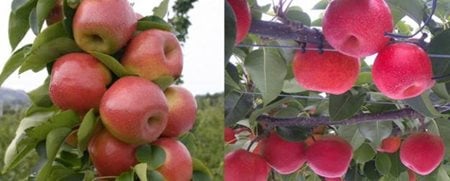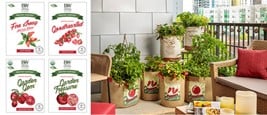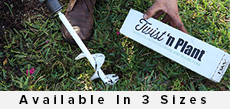Botanic Notables: The Latest Hybrid "Papple"

Photo by: Marks & Spencer
A new fruit hit markets in the U.K. this week. Round, red, sweet, and juicy, the hybrid fruit is described as a pear disguised as an apple. Until it receives an official name, the new fruit has been going by T109—or, to its friends, the "papple."
The fruit is soft, like a pear, and sweet, like a pear, with notes of apple. Its skin (red and orange-yellow) and shape (stout and round) resemble an apple. Despite appearances, though, it's not an apple at all. It's a member of the pear family, a hybrid of two European and Asian pear varieties.
Some say the new fruit—a bit like the more familiar Asian pear—is a fleeting novelty, reminiscent of the pineberry, a "designer fruit" of 2010 that promised to be the best of a strawberry and a pineapple, and seems to be more of a curiosity than a supermarket staple. Alternately, however, the papple could join a list of once-exotic hybrids that easily acclimated to the fruit bowl. After all, boysenberries are a cross between blackberries, loganberries, and raspberries, and Meyer lemons are believed to be a hybrid of a lemon and a Mandarin orange.
And, most familiar of all, most apple varieties are man-made hybrids. Braeburns, Galas, Pink Ladies, the SweeTangos, Honeycrisps, Fujis and other familiar edible apples are the result of grafted trees, making them technically hybrids.
The nickname might welcome a chuckle, but, to its breeders in New Zealand, the papple was a serious project. In the world of hybrids, the journey from farm to table is always long. Cultivating a new fruit cross is largely a trial-and-error process, and as few as one in 1,000 cross-breeding attempts are successful. Once a good parent set has been established, it can still take 10 to 15 years to get the new crop ready for the public. To breeders, market price can be worth it. Hybrids are priced $0.50 to $1 or more per pound than conventional fruits.
The papple currently costs £1 (or about $1.50) per fruit. Have you tried it? As far as new fruit experiences, how does it compare to all those others with hybrid names, like the pluot, plumcot, aprium, or grapple?
Anna Laurent is a writer and photographer. Her work explores how we look at plants, and how those plants behave.







